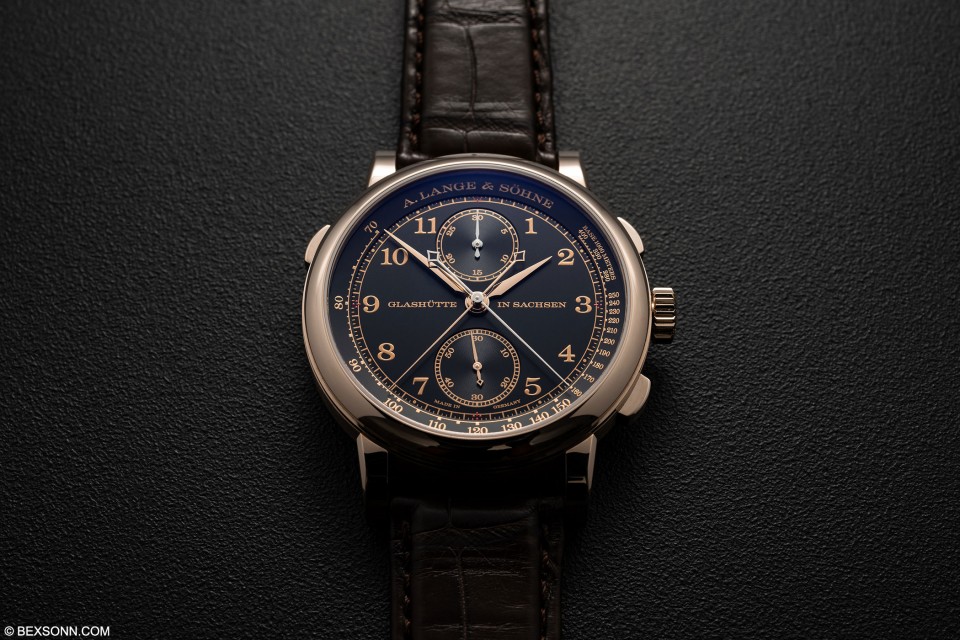This year has been somewhat of anomaly but the fact that watch manufacturers have been able to release some of their best releases this year is nothing short of remarkable. A good few years back, we posted an in-depth article on one of our favourite Lange’s: the Double-Split Flyback. Then a few years after that we posted an article on the Triple-Split Flyback and this is perhaps where we thought Lange could’ve gone in a different direction but perhaps, they were saving that something a little special for this 175th anniversary release. We’ve longed for a Lange chronograph that was perhaps a little more complex than the 1815 Flyback but somewhat less so than the Double-Split Flyback and a few weeks ago Lange released such a piece in the new 1815 Rattrapante Flyback.
It was way back in 1999 that Lange stunned the world of watchmaking with their Datograph and the thing is, not only was it a fully in-house developed chronograph, (which I may add not many attempted to develop in their adolescent years), but it also featured a flyback function. And to add to this, a big date window and power reserve indicator. The 1815 Flyback chronograph is essentially a Datograph minus the large date window and power reserve that admittedly affords for a much cleaner dial.
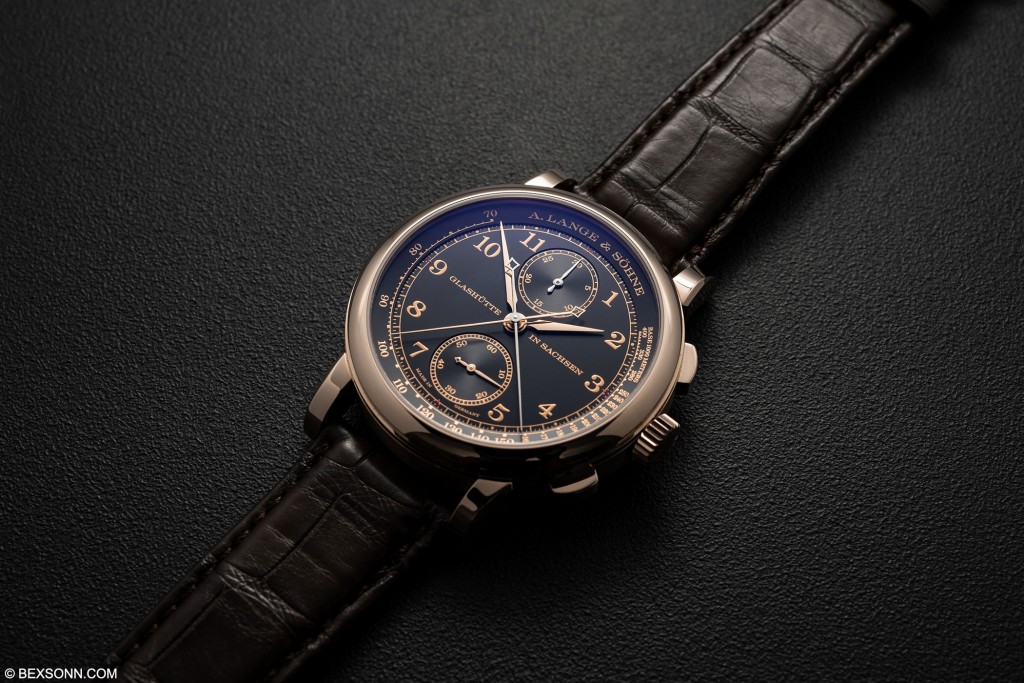
However, this year has seen Lange take the blueprint of said piece and take it to a level of pure genius. The newly developed 1815 Rattrapante Honeygold “Homage to F. A. Lange” is one of three models of an exceptional anniversary collection. Limited to 100 watches and exclusively available in A. Lange & Söhne boutiques, the rattrapante chronograph puts the focus on the eponymous complication. It features a case in honey gold, a black dial, and special movement finissage.
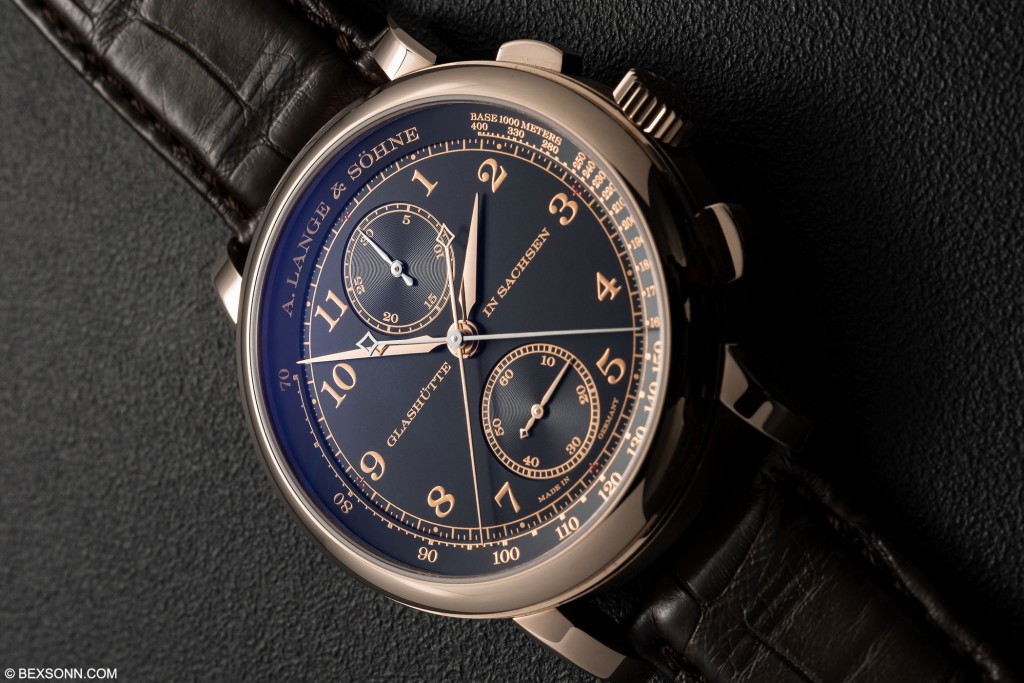
This 1815 Rattrapante Chronograph incorporates the charm of a classic split-seconds chronograph: vertical registers – a little detail which make this piece a masterstroke. The deep black dial, sports gold accents marking the sub dials, hours and minute track. The outer minute track is also placed on the flat section of the dial, as opposed to the flange, and makes use of a 1/5th-minute inner scale, with strategically placed dots marking the hours, with each quarter hour marked with 3 red dots. On the slightly inclined dial flange is the ever-so-important tach-o-meter scale as well as the manufacturers name, which has a huge impact on the overall appearance and balance of the dial.
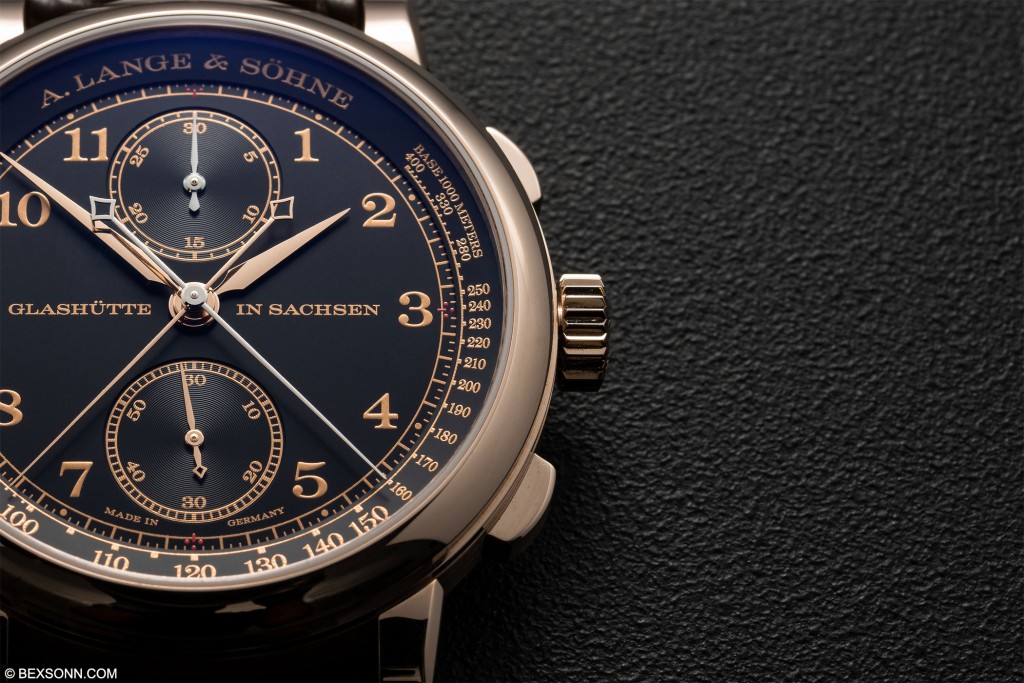
The dial features Alpha hands, full Arabic numerals for the hours and two engine-turned subsidiary dials, which are ever so slightly sunken level from the main dial; recording chronograph minutes and continuous seconds. Again, both make use of railroad track scales and written in German are the words Glashütte in Sachsen, which adds a certain sense sophistication.
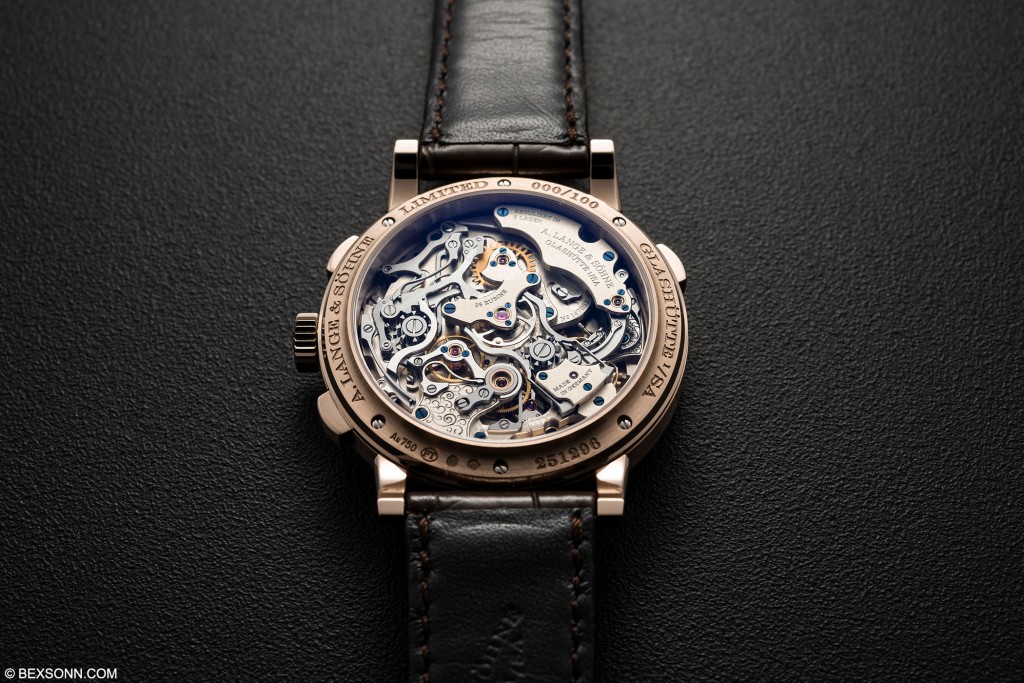
Turning a Lange 1815 Rattrapante chronograph over to view the movement through the sapphire-crystal caseback reveals one of the technically most exquisite and at the same time most beautiful chronograph mechanisms ever made. The most astounding thing about this manual-wound calibre L101.2 movement has to be its depth.
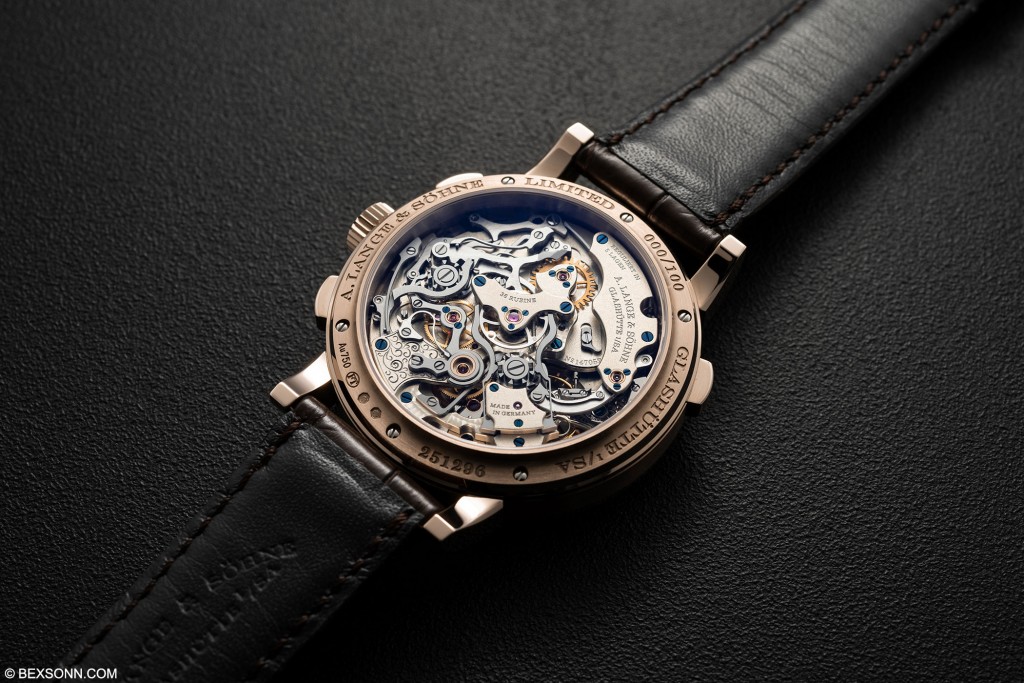
The complex chronograph/rattrapante mechanism is located on the movement side of the new L101.2 manually wound calibre. The control of elapsed or lap-time measurements is handled in the highly precise classic manner; with two column wheels. Like the rattrapante clamp that blocks the rattrapante hand in the lap-time display mode, it is visible through the sapphire-crystal caseback. This allows the precise switching processes to be observed in detail. When fully wound, the mainspring barrel delivers a power reserve of 58 hours. In connection with the screw balance, also manufactured in-house, the freely oscillating Lange balance spring guarantees excellent rate accuracy at a frequency of 21,600 semi-oscillations per hour (3 hertz).
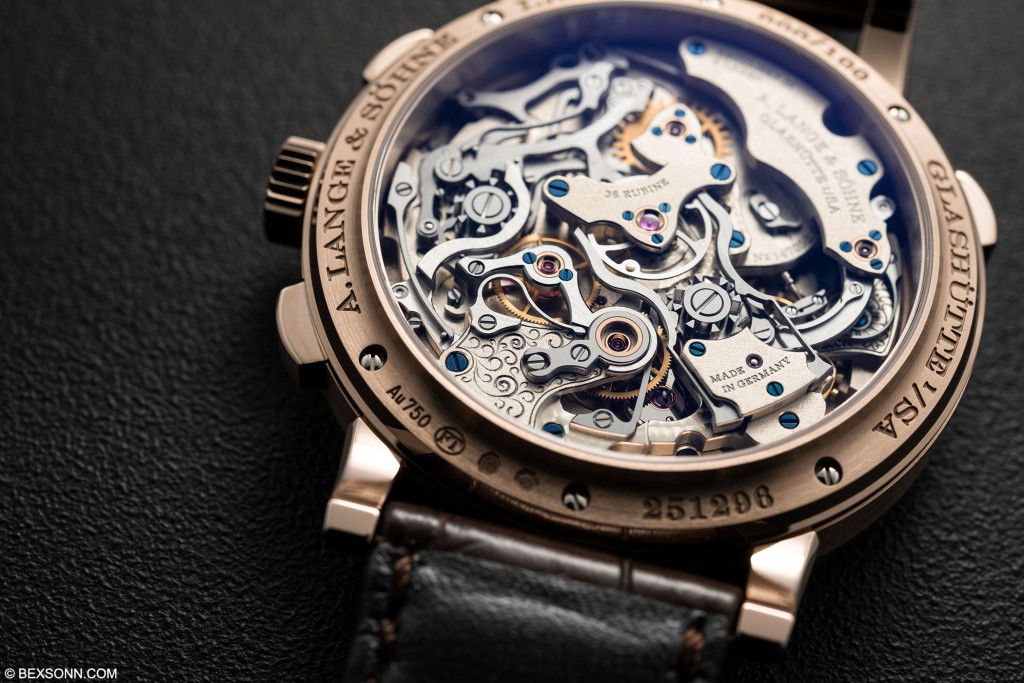
As mentioned, the finissage of the manually assembled 365-part movement is inspired by the bench-marks developed by Ferdinand Adolph Lange to make his calibres inimitable. All upper sides of the moving parts of the rattrapante chronograph, such as levers, springs, and jumpers, are decorated with straight graining while the chamfers are polished. All of the fine lines of the free-hand engravings on the balance cock and the chronograph bridge as well as the inscriptions on the bridges are black-rhodiumed.
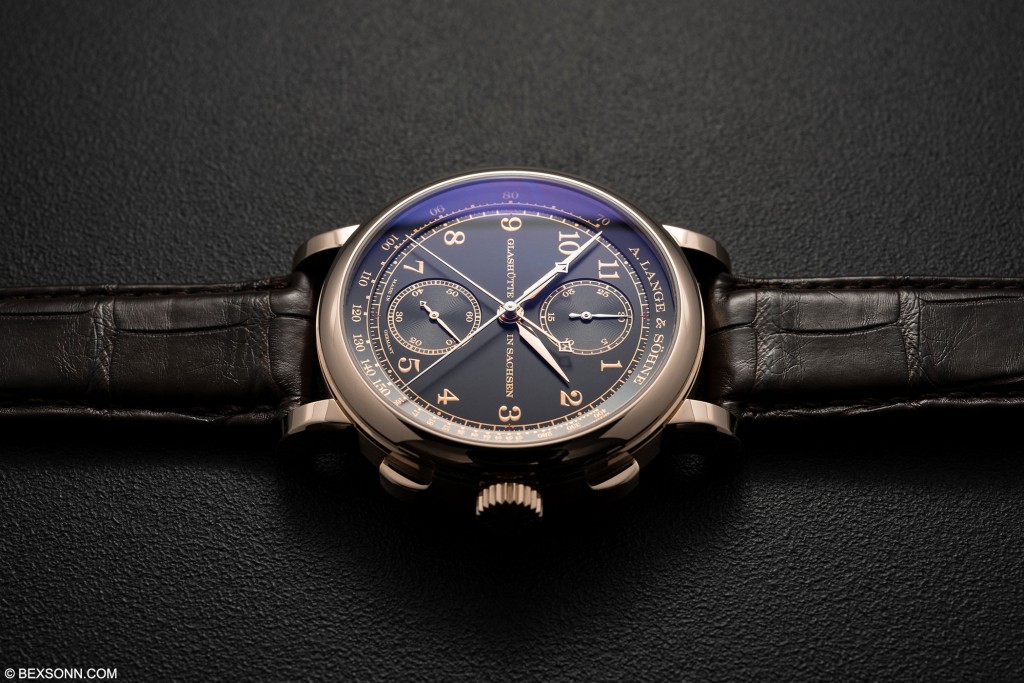
In my opinion, the 41.2 mm case is what makes this Lange pretty much perfect, it’s no fuss yet simple and functional design is a standout feature. Fashioned out of honeygold, all facets have been polished to a mirror shine with the exception of the middle case section, which has a satin brushed finish. Like all of Lange’s timepieces the 1815 Rattrapante Chronograph makes use of rectangular push pieces, located at 2, 4 and 10 o’clock on the case band. The case features a large fluted crown that is practical when considered it will get used quite often. Covering the dial is anti-reflective sapphire crystal and the same is used on the exhibition case back.
FLEETING THOUGHTS
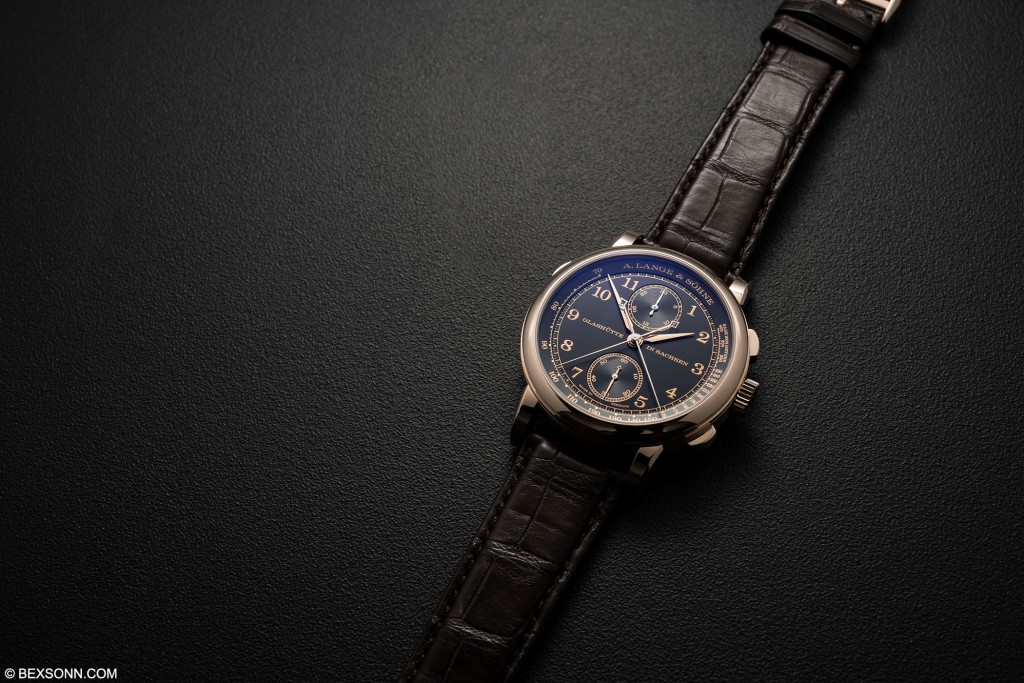
The new 1815 Rattrapante Chronograph is everything you want from a classic split-seconds chronograph and what’s more the layout and balance of the dial is rather unusual for Lange, and this is perhaps why it will be one of the most sought-after pieces from the 175th Anniversary line up. The 41.2mm case may be a tad larger than one would’ve hoped but to be honest it’s perfectly balanced and feels just right on the wrist. The 1815 model line is without doubt one of my personal favourites and this new limited edition lends something a little different to the range that is still in keeping with the heritage of Lange.
This new A. Lange & Söhne 1815 Rattrapante Chronograph is limited to 100 and is only available from Lange Boutiques. It is priced at £124,100 and is only available in honeygold. For more information on the new 1815 Rattrapante Chronograph Honeygold, visit alange-soehne.com
